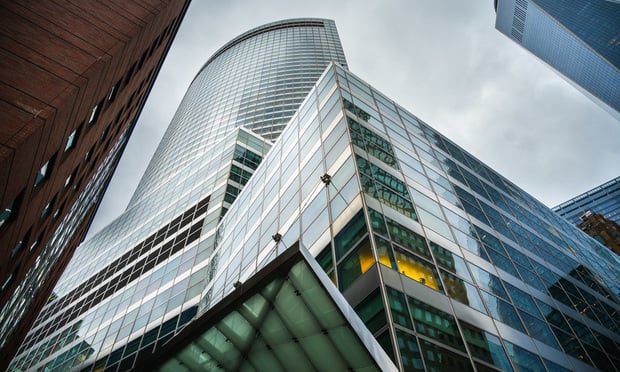 Larry Silverstein, chairman andfounder of Silverstein Properties. Shutterstock.
Larry Silverstein, chairman andfounder of Silverstein Properties. Shutterstock.
NEW YORK CITY – LarrySilverstein, chairman and founder of real estate development andmanagement firm Silverstein Properties, has had eyes for LowerManhattan since his first acquisition at 44 Wall St. in the early1970s.
|Soon after, that initialinvestment mushroomed into several others nearby for a total offour million square feet in the portfolio before his acquisition ofthe then Twin Towers in 2001. "By that time LowerManhattan was a very important part of me and I found myselfattracted to it continuously," Silverstein tellsGlobeSt.com.
|Silverstein is a witness to thechange in Lower Manhattan from his earliest involvement in themarket up until today, watching the development of buildings growlarger, and the neighborhoods evolve into a live-work-playenvironment. He has also been a part of the community confrontingits past from the 9/11 tragedy that changed the world of Downtownforever, he said.
|From the acquisition of 44 WallSt. that totaled an estimated 300,000 square feet was 120 Broadway,totaling an estimated 700,000 square feet, 120 Wall Street totalingan estimated 1.8 million square feet on a half-square block, andthen to the winning of development rights of 7 World Trade Center.And then came the Twin Towers acquisition, which months later weredemolished in a calculated terrorist attack and later rebuilt toOne World Trade Center.
|The market is completelydifferent from post and pre 9/11, Silverstein remembers. "Theprogress is nothing short of compelling, it's remarkable," he said."You look at the buildings that were here several decades ago, andthe buildings that are here today, it's another city, it is atotally different environment, it is anothercommunity."
|According to Silverstein, thedensity of the buildings has grown vast and they are much tallerand larger. Still reminders of what the market was are Landmarkbuildings permeating Lower Manhattan to a degree far greater thanany other part of the city because they were the landmarks from theearliest days of New York City. "There are some of thearchitectural legends of federal landmarks of yesteryear," he said."Going back to buildings built in 1915, 1918 and 1920," he said."They're magnificent landmark buildings."
|Neighborhoods have broadenedDowntown Manhattan by virtue of landfills, such as in Battery ParkCity and over to the East River. The population in the neighborhoodhas also grown substantially, with more people than ever residingin the area than ever before. Office buildings have been convertedinto residential buildings, Silverstein said. "You see how thechange has taken place in Lower Manhattan and today with 11 masstransit lines serving Downtown, it is the largest live-work-playpopulation in the U.S.," he said. "It has the highest concentrationof people living in communities in which they work. It's a completechange in which resonates the greatest."
|In a new book titled "A Century Downtown," highlighting the variedhistory of Lower Manhattan, Silverstein notes how the area haschanged into a hub for tech and creative-focused companies. In thebook's forward, he says, "this isn't your grandfather's WallStreet."
Want to continue reading?
Become a Free ALM Digital Reader.
Once you are an ALM Digital Member, you’ll receive:
- Unlimited access to GlobeSt and other free ALM publications
- Access to 15 years of GlobeSt archives
- Your choice of GlobeSt digital newsletters and over 70 others from popular sister publications
- 1 free article* every 30 days across the ALM subscription network
- Exclusive discounts on ALM events and publications
*May exclude premium content
Already have an account? Sign In
© 2024 ALM Global, LLC, All Rights Reserved. Request academic re-use from www.copyright.com. All other uses, submit a request to [email protected]. For more information visit Asset & Logo Licensing.








